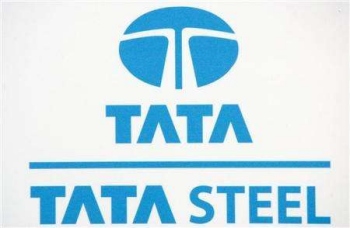The market upswing saw a huge change in fortunes for investors with fund managers cashing in on the up move. Today, at the end of Smart Portfolios Season I, the benchmark (BSE 200) has given a return of 9.37 per cent.
In sharp contrast to the benchmark’s net returns, our four fund managers have out-performed by a wide margin. Amar Ambani’s networth has zoomed 161 per cent to Rs 26.12 lakh, Anand Agarwal’s portfolio value has soared over 120 per cent to Rs 22.02 lakh, Kashyap Pujara’s networth has appreciated by over 34 per cent to Rs 13.42 lakh and Sadanand Shetty’s portfolio value is up nearly 64 per cent at Rs 16.37 lakh.
In the week under review, the Smart Portfolios networth rose by 4.5 per cent.
QUIET WEEK
KASHYAP PUJARA
Fund Manager, ENAM Direct
Kashyap Pujara remained on the sidelines for the second straight week, while his portfolio value appreciated by 2.8 per cent. His top performing stocks were Century Textiles (up 74 per cent), Sterlite (up 70 per cent) and EID Parry (up 59 per cent).
| Top Holdings | % of assets | Cost Price (Rs) | Current price (Rs) | Value (Rs lakh) |
| Balrampur Chini | 25.34 | 96.27 | 113.35 | 3.40 |
| Aditya Birla Nuvo | 15.05 | 695.00 | 1009.70 | 2.02 |
| Century Textiles | 13.54 | 273.00 | 454.25 | 1.82 |
| ONGC | 13.18 | 1028.00 | 1179.20 | 1.77 |
| EID Parry | 9.67 | 313.99 | 324.25 | 1.30 |
| Total investments | 94.08 | - | - | 12.62 |
| Cash | 5.92 | - | - | 0.79 |
| Net worth | - | - | - | 13.42 |
| Returns (%) | 34.17 | - | - | - |
The laggards were Reliance Communications (down 53 per cent) and Madras Aluminum (down 30.3 per cent).
MARGINAL GAINS
ANAND AGARWAL
Head – Products & Investments, Reliance Money
Anand Agarwal was a net seller of stocks worth Rs 5.66 lakh, and his portfolio value moved up by 0.8 per cent (Rs 18,000) last week. His networth scaled over 120 per cent, thanks to Axis Bank (up 187 per cent) and TRF (up 61 per cent).
| Top Holdings | % of assets | Cost Price (Rs) | Current price (Rs) | Value (Rs lakh) |
| Numeric Power | 22.71 | 372.00 | 490.35 | 5.00 |
| Rasoi | 20.44 | 301.00 | 375.05 | 4.50 |
| Sakthi Sugar | 15.41 | 79.68 | 84.85 | 3.39 |
| Prime Focus | 4.49 | 171.25 | 197.65 | 0.99 |
| Total investments | 63.06 | - | - | 13.88 |
| Cash | 36.94 | - | - | 8.13 |
| Net worth | - | - | - | 22.02 |
| Returns (%) | 120.19 | - | - | - |
Jet Airways (down 56 per cent), Deccan Aviation (down 60 per cent) and Reliance Communications (down 37 per cent) were the major drags.
HEALTHY PROFITS
AMAR AMBANI
Vice President (Research), India Infoline
Amar Ambani’s networth rose by 5.3 per cent (Rs 1.32 lakh) in the week under review. He was a net seller of stocks worth Rs 15.85 lakh. His best pick was Hindustan Oil Exploration with a net gain of over 92 per cent followed by Elantas (up 79 per cent), and Falcon Tyres (up 65.4 per cent).
| Top Holdings | % of assets | Cost Price (Rs) | Current price (Rs) | Value (Rs lakh) |
| Aban Offshore | 12.03 | 1350.00 | 1571.30 | 3.14 |
| Allied Digital | 9.59 | 452.80 | 500.75 | 2.50 |
| NIIT Tech | 2.44 | 114.95 | 127.50 | 0.64 |
| Jindal Drilling | 2.39 | 517.00 | 624.25 | 0.62 |
| Suven Life | 1.86 | 22.75 | 32.40 | 0.49 |
| Total investments | 31.51 | - | - | 8.23 |
| Cash | 68.49 | - | - | 17.89 |
| Net worth | - | - | - | 26.12 |
| Returns (%) | 161.20 | - | - | - |
On the other hand, Jindal Saw Pipes, Axis Bank and Jaiprakash Associates were the top three laggards.
IN BUY MODE
SADANAND SHETTY
Vice President, Kotak Securities
Sadanand Shetty was a net buyer of stocks worth Rs 3.23 lakh, and his networth rose by 4 per cent last week. Orbit Corporation with an average gain of 100 per cent was the top performing stock in his portfolio. It was followed by Godrej Consumer (up 84 per cent) and Balrampur Chini (up 71 per cent).
| Top Holdings | % of assets | Cost Price (Rs) | Current price (Rs) | Value (Rs lakh) |
| United Phos | 7.88 | 166.21 | 166.45 | 1.29 |
| GVK Power | 6.27 | 43.15 | 47.45 | 1.03 |
| NDTV | 5.86 | 157.00 | 159.95 | 0.96 |
| United Spirits | 5.84 | 888.68 | 955.05 | 0.96 |
| JSWSL | 5.41 | 687.25 | 708.85 | 0.89 |
| Total investments | 83.63 | - | - | 13.69 |
| Cash | 16.37 | - | - | 2.68 |
| Net worth | - | - | - | 16.37 |
| Returns (%) | 63.66 | - | - | - |
On the other hand, Glenmark Pharma with an average loss of around 50 per cent was the biggest underperformer in his portfolio. Everest Kanto (down 50 per cent) and MIC Electronics (down 49 per cent) were the other big losers.
Smart Portfolios Season II
Over a year ago, we had taken the initiative to start a unique educational game – Smart Portfolios – for a one-year period. This initiative was started with four money managers who were given a virtual corpus of Rs 10 lakh to be used for creating a portfolio which could beat the benchmark, the BSE 200. The year-long exercise helped investors understand the investing philosophy of the fund managers as well as their picks. Your enthusiastic response has led to the launch of “Season II” of Smart Portfolios from September 1, 2009.
There are changes in the rules, the people playing the game and the benchmark. Two new fund managers – Ajay Parmar, head, Research-Institutional Equities, Emkay Global and Peeyoosh Chadda EVP & co-head Asset Management, Edelweiss will join Amar Ambani and Sadanand Shetty for the second season. The benchmark will also change to the S&P CNX 500.



![[fast+economies.jpg]](https://blogger.googleusercontent.com/img/b/R29vZ2xl/AVvXsEjWjsT4nLTae_5wASEUKx9muLkkmRPy6vum74ox3b0bOH8cUST7LDPIGXl9fZiN0dMW9xVJugVH_O03qdGl7Jt2MYLNkuStn3zIM5IuLUqZrvl2ax8wH60o4YVx104mLxPaARxJW3NUdUE/s1600/fast+economies.jpg)
